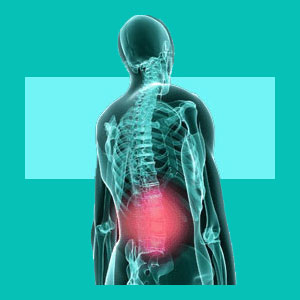
Understanding the truth about bulging disc symptoms is a good place to begin for patients who have been diagnosed with a herniated disc somewhere in their spines. The term bulging disc is almost always reserved for minor to moderate herniations in which the disc structure remains intact and uncompromised.
Although bulging discs are considered a spinal abnormality, they are incredibly common and are found in many patients with and without back pain conditions. It should be made abundantly clear that most bulging discs are not painful or symptomatic in any way, but severe disc issues can be agonizing or enact significant neurological effects in unfortunate patients.
This dialog provides an overview of the types of symptoms typically created by bulging spinal discs in the lower back and neck.
Facts about Bulging Disc Symptoms
When diagnostic imaging, such as CT or MRI, was first utilized to visualize the intervertebral discs, doctors assumed that most back pain was related to herniations. After all, the patients who were having the tests done were complaining of back pain and many showed disc pathologies, such as bulges and ruptures. As time passed and diagnostic imaging was used for many reasons unrelated to back pain, it became quite obvious that herniated discs exist in just as many people who had no history of back pain as those who did.
This fact fueled many research studies and finally resulted in the conclusion that there is little, if any, evidence that bulging discs are harmful, painful or problematic in any way, unless they affect a surrounding nerve structure.
Detailed View of Bulging Disc Symptoms
Remember that the disc itself has no internal nerve endings or blood supply. A disc does not feel pain. Pain can be elicited due to some related conditions such as spinal stenosis or foraminal stenosis, but these events are not commonly caused by disc prolapse, even though they are diagnosed as being disc-related in epidemic numbers.
Disc pain has also been theorized to exist due to even more obscure diagnostic theories, such as discogenic pain and chemical radiculitis. These remain highly controversial topics in the back pain industry to this day, since there is little proof that they exist in most diagnosed patients.
Personally, I have dealt with so many patients who have terrible back pain, yet no structural issue to blame, as well as those who do have notable structural scapegoats, but whose symptoms do not correlate to the expected clinical pattern of the diagnostic theory. Of course, many people demonstrate really ugly looking disc pathologies on MRI studies which are performed for unrelated conditions, but have no history of back or neck pain whatsoever. This has made me particularly suspect of bulging discs as a causative condition for dorsal pain.
Symptoms of a Bulging Disc
Far beyond the research and second hand experience is my own personal battle with herniated disc pain. I was diagnosed with 2 lumbar herniated discs early in my 20’s and suffered from them for years. As time went on, I learned more and more about back pain and found a cure without doing anything to change the anatomy of these discs. In fact, since this time, I have been diagnosed with a total of 12 herniations, with one being particularly troublesome in my neck, drastically impinging on the spinal cord.
Since the newest research supports all the facts presented in this essay, I stand by my thoughts about bulging discs, although no rule is without exceptions. I have seen patients who had structural nerve compression issues which required treatment and sometimes, even surgery. These cases do happen. However, they represent a tiny fraction of the entire diagnosed patient population.
If your chronic herniated disc pain has not resolved despite the best efforts of multiple doctors, it is time to consider the obvious. Maybe that disc is not to blame for anything, except wasting your time and money seeking treatment for a structural issue which is causing no trouble at all.





